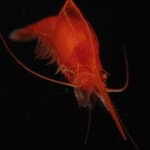Ecology & Zoology

Female beetles mate to quench their thirst according to new research by a University of Exeter biologist. The males of some insect species, including certain types of beetles, moths and crickets, produce unusually large ejaculates, which in some cases can account for around 10% of their body weight. The study shows that dehydrated females can accept sexual invitations simply to get hold of the water in the seminal fluid.
Dr Martin Edvardsson, whose research is published in the journal Animal Behaviour (August 2007), studied the bruchid beetle Callosobruchus maculatus, a serious pest in warmer…

A recent issue of Nature celebrated Linnaeus’ 300th birthday with a series of editorials, essays and features on the continuing work of taxonomists. One of the more provocative articles discusses the definition of species, including the status of the beloved polar bear, Ursus maritimus.
Polar bears are more closely related to some brown bears (Ursus arctos) then some brown bears are to each other. While the interrelationships of these species (and subspecies) is a surprise, it has long been known that the animals are closely related and has been evidenced (rarely) by the hybridization of the…

Originating in Central Africa, Peters' elephantnose fish (Gnathonemus petersii), finds its bearings by means of weak electrical fields. Scientists from the University of Bonn have now been able to show how well this works. In complete darkness the animals can even distinguish the material of objects at a distance or dead organisms from living ones. The results have now been published in the Journal of Experimental Biology.
The fish, which is as long as a cigar, hovers with its head inclined, close to the gravel-covered bed. While it swims forward slowly, its trunk-like elongated chin sweeps…

Previous Article | Next Article
From today's ScienceNOW, to be pondered:
Mickey Has Two Mommies
By Constance Holden With reporting by Gretchen Vogel.ScienceNOW Daily News20 August 2007
Sharks and some reptiles do it, but no mammal has ever been successfully replicated through parthenogenesis: birth from an egg that has not been fertilized by sperm. Now, a Japanese team has figured out how to overcome nature's obstacles and has generated apparently normal mice by combining the genomes of two mouse eggs. The trick is in reprogramming one of the eggs to make it act more like…

Do bats use their ultrasonic echolocation calls to recognize their own species?
A new study in the Journal of Biogeography by Danilo Russo and colleagues suggests that this is certainly the case for Rhinolophidae - horseshoe bats. These bats find their way in the dark and detect insect prey by emitting long ultrasound calls mainly made of a constant frequency. Different rhinolophid species show different frequency values. It has been proposed that such differences are large enough to allow recognition of conspecifics.
The study proved that in Sardinia, Mediterranean (Rhinolophus euryale)…

Called by some the Blue Eye of Siberia and by others the Sacred Sea, Lake Baikal, at more than 5,000 feet ( 1,620 meters ), is the world’s deepest lake. The lake has many other interesting features also. For example, more than 330 rivers flow in but only the Angara flows out.
Even the potential for oil-related environmental disaster along the Eastern Siberia–Pacific Ocean pipeline was enough to get that project moved farther away from one one of UNESCO's world heritage objects.
What do you do when Mother Nature herself starts leaking the oil?
Image by geology.com using NASA Landsat data…

Researchers have found native gold, silver and platinum salts in the dust of decayed stumps. A ton of their ashes contains 3 kilograms of silver, nearly 200 milligrams of gold and 5 grams of platinum.
These biogeochemical anomalies in complex ore deposit regions were formed by microbes and trees, which act as "gold-diggers" and draw soluble salts out of the soil and then die off, leaving behind the concentrate with “enormous” precious metals content.
The oxidation zone of some ore bodies is very close to the ground surface, within reach of tree roots. That is why, the researchers believe,…

Exploring life in the North Atlantic Ocean at various depths of 800 to 3,500 metres, a team of 31 scientists are returning from a five-week scientific expedition which has surfaced a wealth of new information and insights, stunning images and marine life specimens, with one species thought to be new to science.
Professor Monty Priede, Director of the University’s highly-acclaimed Oceanlab, along with colleague Dr Nicola King, and students Jessica Craig, Claudia Alt and James Hawkins, are part of the science team on board the ship.
Professor Priede said: “It is like surveying a new continent…

Vampire bats that live in Latin America have switched to blood meals from cattle instead of from rainforest mammals, ecological physiologists report in the Journal of Comparative Physiology B.
They say that the conversion of rainforests ecosystems into livestock producing farmland resulted in the expansion of vampire bat populations in Latin America.
Farmers are observing vampire bats satisfying their need for blood by attacking cattle instead of wild mammals. To document this change in behavior, Dr Christian Voigt and colleagues analyzed the stable carbon isotope ratio of exhaled CO2…

The plant growth hormone auxin is controlled by circadian rhythms within the plant, UC Davis researchers have found. The discovery explains how plants can time their growth to take advantage of resources such as light and water, and suggests that many other processes may be influenced by circadian rhythms.
Auxin tells shoots to grow away from the ground and toward light and water. Charles Darwin conducted early experiments that showed how auxin affects plant growth. Most plants and animals have an internal clock that allows them to match their activities to the time of day or season of the…